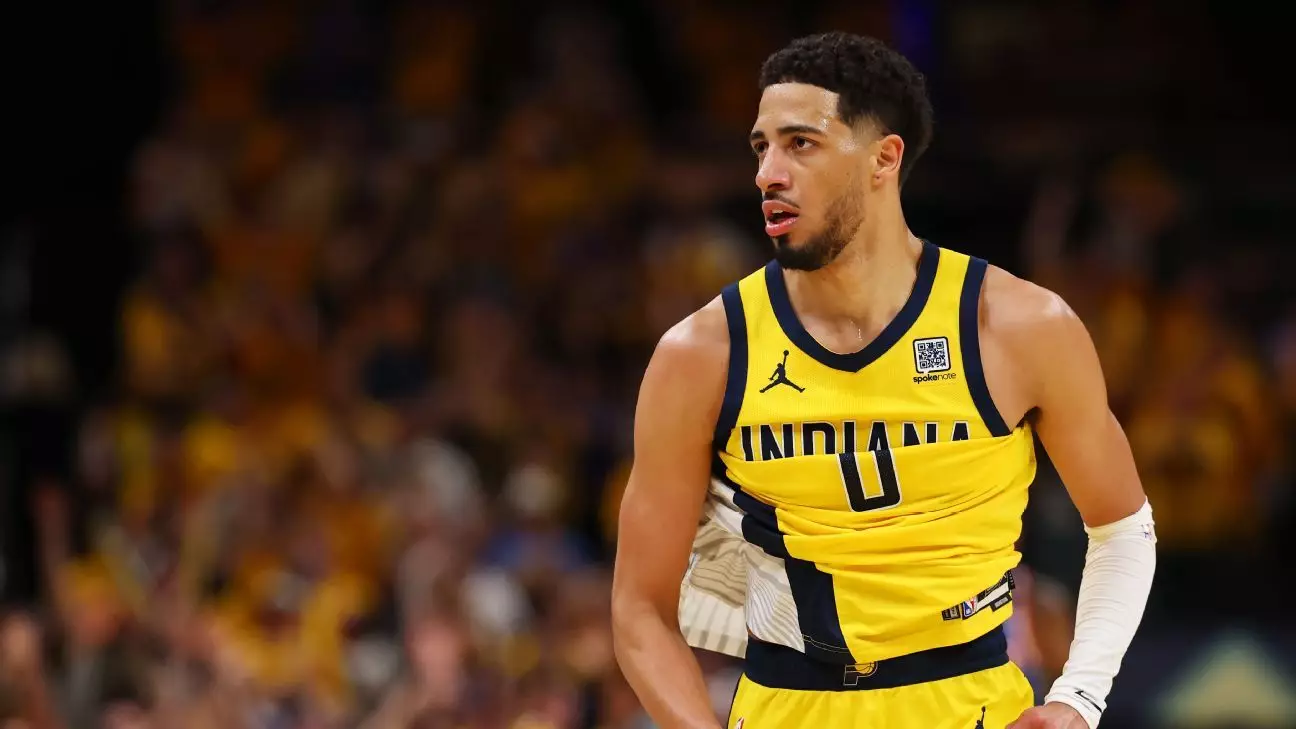In the high-stakes realm of professional basketball, injuries are often dismissed as mere misfortune—a roll of the dice that no athlete or team can truly control. Tyrese Haliburton’s candid reflection on Achilles injuries disrupts this view, urging us to look beyond simplistic explanations like overuse or bad luck. While many see injuries as inevitable byproducts of the grueling NBA schedule, Haliburton pushes for a deeper understanding: perhaps we are overlooking systemic factors and cultural issues that elevate injury risk. His perspective implies that attributing injuries solely to randomness undermines the complexity of athletic health, and potentially hampers efforts to prevent future setbacks.
This stance invites us to question the narratives surrounding “unlucky” athletes. If injuries were truly random, then every player should have an equal shot at suffering them, regardless of play style, workload, or preparation. Yet data and anecdotal evidence show that some athletes are more prone to injuries than others, suggesting underlying variables at play. Haliburton’s own injury—though unavoidable in some sense—raises critical questions about the training regimens, recovery protocols, and mental states that might contribute to vulnerability. Is the culture of pushing through pain and fatigue inadvertently increasing risk? Or are there deeper, perhaps overlooked, biomechanical or psychological factors that predispose certain players to such catastrophic injuries?
Beyond the ‘Bad Luck’ Narrative: The Hidden Factors
The sports world often simplifies injury causality to overtraining or fatigue, but Haliburton’s comments challenge that. His case exemplifies how micro-injuries, early warning signs, and psychological stressors can culminate unexpectedly. Despite passing stress tests and feeling confident, the Achilles tear occurred during a critical game scenario—highlighting that injuries can strike even when everything seems optimal. The notion of “bad luck” ignores the complex interplay of biomechanical vulnerabilities, fatigue accumulation, and emotional pressure.
Further complicating this, the NBA’s rigorous schedule—linked to debates about the number of games and minutes played—may not be the primary culprit. Commissioner Adam Silver has indicated most injuries occur early in the season, suggesting that external factors such as inadequate recovery windows, insufficient training focus on injury prevention, or the mental toll of back-to-back games might play more significant roles. Haliburton’s insights highlight a need for a comprehensive approach: one that emphasizes individualized health protocols, psychological resilience, and smarter workload management, rather than purely reducing game counts or minutes.
The Culture of Endurance and Its Toll
A deeper cultural critique emerges from Haliburton’s story. The relentless pursuit of excellence, combined with the high expectations placed upon NBA players, often cultivates an environment where pushing through pain is rewarded, not questioned. Players are conditioned to view injury as a sign of weakness, discouraging them from reporting early symptoms or seeking necessary rest. This mindset can silently erode physical health over time, increasing the likelihood of catastrophic tears like Achilles ruptures.
Moreover, the mental resilience required to play at peak levels can paradoxically become a double-edged sword. Haliburton’s experience—feeling great entering Game 7, only to suffer an injury at the crucial moment—reflects how mental preparedness may mask physical vulnerabilities. The obsession with staying on the court might push athletes beyond their natural thresholds, neglecting subtle signs of fatigue or overuse that could be mitigated with better preventive care.
The sports industry’s focus on performance over health accelerates this cycle, risking long-term damage for short-term gains. The growing awareness of mental health issues in sports could be a catalyst for change, promoting a culture where injury prevention and psychological well-being are prioritized alongside athletic achievement.
Redefining Injury Prevention for the Future
If the conventional wisdom about injuries is lacking, then the solution must be radically rethought. Haliburton’s open dialogue and a focus on mental and physical health signal a shift toward a more holistic approach. Teams need to invest not just in physical therapy and training, but also in mental health support, biomechanical analysis, and personalized recovery plans.
Innovative technology could also play a pivotal role. Wearable devices and biomechanical modeling can detect early signs of strain, allowing preemptive interventions that prevent catastrophic injuries. Additionally, re-evaluating the cultural norms around playing through pain and prioritizing rest—especially during the early and middle parts of the season—might yield significant reductions in injury rates.
Finally, the NBA and related organizations must embrace transparency about injury causes, fostering an environment where players feel safe reporting issues before they escalate. By shifting focus from “bad luck” to proactive prevention and holistic health, the league can protect its athletes and preserve the integrity of the game.
Bradley’s perspective on Achilles injuries exposes a crucial gap in our understanding—one that demands critical scrutiny and bold action. It’s time to move beyond the myth of randomness and recognize the multifaceted nature of athlete health, forging a new path that prioritizes long-term well-being over short-term spectacle.


Leave a Reply